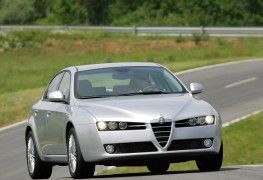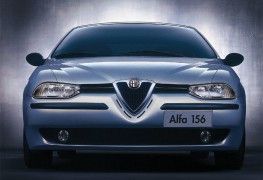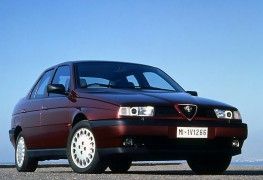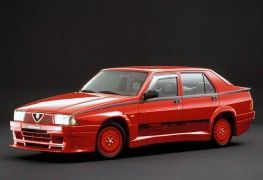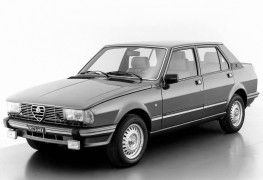The problem for Alfa Romeo was enormous. It wanted to give a worthy successor to the Giulia by the early seventies, but the traditional Italian clientele was evolving, as was the market. At the same time, the 1750/2000, whose aesthetics were strongly inspired by the Giulia, but incorporating more taut lines and lower curvature radii to accommodate the prevailing fashion, was not able to impose itself in this new, increasingly demanding luxury saloon market.
In addition to all that, the "traction" exerted by the entry-level versions of the Giulia also invited Alfa Romeo to create a more economical model.
Be that as it may, in the face of all this situation there were also changing aesthetic trends to be faced. The market was rapidly evolving towards cars that were much more "squarer" and cruder in their definition, but Alfa Romeo was afraid to quickly switch to this new fashion without upsetting its traditional customers.
Finally it was decided to start working on the Tipo 116 project. The aim was to create a product that would be placed immediately between Giulia and 2000, serving as an indirect substitute for both, while the Alfa 6 was being developed as a luxury sedan, and the Giulietta of 1977, already as a premium sporty D-segment car.
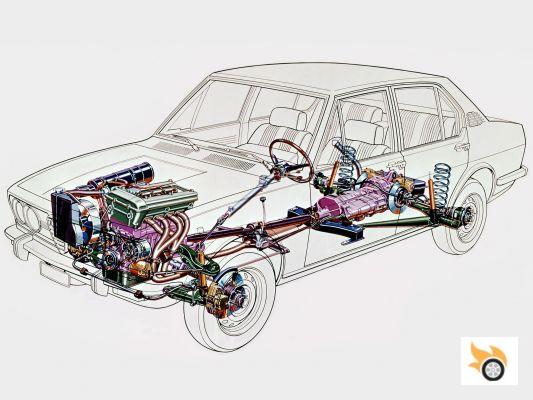
The technical work on the Alfetta started from a blank sheet of paper. The development was the responsibility of Giuseppe Busso, who decided to opt for a mechanical combination superior to what all its rivals on the market had: a longitudinal front engine set back over the front axle, sending the torque to a rear transaxle gearbox, which was accompanied by a De Dion bridge.
The front suspension was a system of double overlapping triangles, using longitudinal torsion bars as a spring element, while the rear axle, as I said above, was a De Dion system, helped by a Watt transverse tie rod to control the wheel movements. The brakes were disc brakes on all four wheels, the rear discs being located as unsprung mass, at the differential output, instead of behind the rims.
The weight distribution was perfect, 50/50, while the polar moment of inertia was also kept very low. The precise wheel guidance provided by the suspension was another determining factor in this configuration.
The heart of the Alfetta was a new 1779 cubic centimetre engine, derived from the one used in the 1750, with an aluminium alloy block and cylinder head, using cast iron cylinder liners, with double overhead camshafts, as it could not be otherwise for Alfa Romeo. The use of an 80-degree valve angle made it possible to have a hemispherical chamber, which allowed a better combustion. Fed by two Weber 40 DCOE / 32 twin-body carburettors, it was capable of delivering 122 horsepower at 5,500 revolutions per minute, with more than 170 Nm of torque available at 4,400 revolutions.
To dress such a technical display, the car counted on the work of Giuseppe Scarnati from Alfa Romeo's Centro Stile, although the contribution of Giorgietto Giugiaro, who had been commissioned to design the coupé derived from this Alfetta, and whose input would be taken into account for the formal definition of the final car, was also vital in 1968.
Starting with the front, Alfa Romeo kept the classic look of four circular headlights grouped in pairs, guarding a chrome grille with a central inverted triangular shield. The nose was low, giving way to a very flat bonnet. The side view was dominated by the definition of the roof and its connection to the body through a thick and aesthetic C-pillar, while the rest of the roof panel was supported by thin A and B pillars, which promised excellent visibility from the driving position.
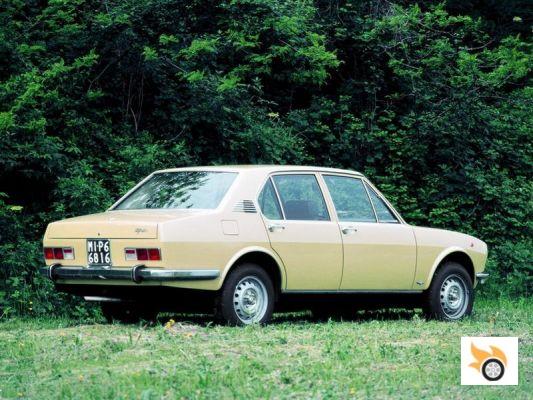
The side profile, in its lower part, dispensed with aesthetic ornaments or large additions, opting for simplicity of form and working with great care the angles formed between the various folds of the sheet metal, which in turn were created with relatively small radii, seeking to modernize the look of the Alfa Romeo.
The rear part of the car stood out for the feeling of the boot lid being clearly higher than the nose, in search of aerodynamic benefits and also the maximum possible luggage-carrying capacity. And this was also largely influenced by the layout of the cabin.
But before commenting on the interior, it is worth closing the aesthetic section by explaining how Alfa Romeo, even with a very successful design and adapted to the times, was still feeling the historical pressure, already in the early seventies, for the break with the aesthetics applied in the Giulia, so it considered that the risk of losing traditional customers due to this aesthetic turn was very pronounced.
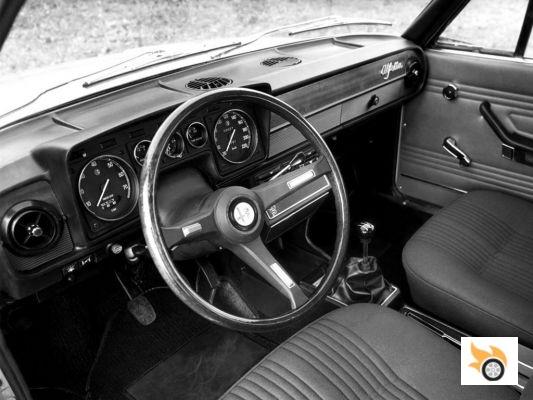
The cabin was another big leap forward compared to the Giulia. The dashboard incorporated a new aviation-style clock display, with two large main ones, dedicated to the rev counter and speedometer and smaller displays for coolant temperature, oil temperature, fuel level and time. All were presented on a dashboard with genuine wood and a very horizontal design that "floated" above the car to enhance the feeling of spaciousness, taking advantage of a rear gearbox.
It was just that rear gearbox that in turn generated the space issue in the rear seats. Being a sedan of 4.28 meters long, it was not just space behind in terms of length compared to its rivals, but the width was conditioned by a transmission tunnel larger than that of its rivals, to give shelter to that gearbox. The trunk also had its bottom a little higher than usual, and its load threshold was also quite high.
Upholstery and materials were first class, as was the design, but the big problem of the time was the quality of execution. The workers at the Arese factory made many mistakes in the final assembly, which meant that the units that had just left the factory always had some detail to be polished by the customer. But, as it was said at the time, "the Alfa Romeo customer wants to drive his car, he doesn't give a damn about the rest". Those were different times, yes.
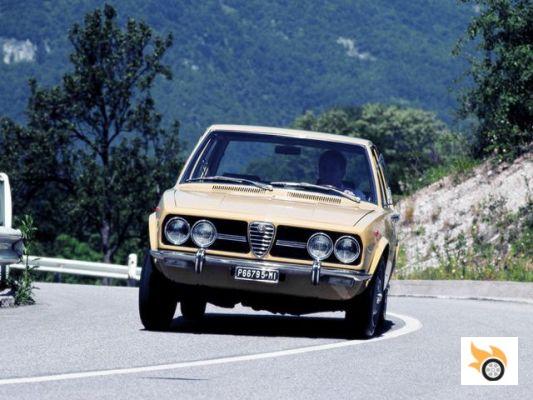
And it drove superbly. With a weight of 1,060 kilograms and 122 horsepower, the "original" Alfetta was capable of reaching 184 km/h and breaking the 100 km/h barrier in less than 10 seconds. The steering, with rack and pinion instead of a recirculating ball system, was direct and precise, while the chassis, displaying its perfect mechanical layout, was particularly effective and neutral, mixing at the same time the expected sporty character of every Alfa Romeo with a ride comfort on a par with its best rivals.
The big driving drawback of these cars was the inaccuracy of the gear lever. The use of rod-shifters to operate the rear-axle gearbox meant that gearshift travel and play were worse than in previous models, which somewhat spoilt the driving experience when you wanted to change gear quickly.
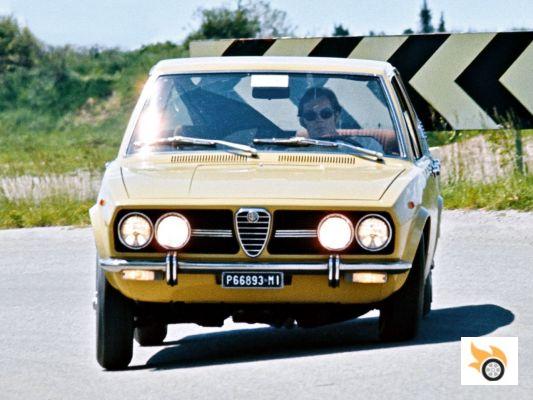
The car was presented on May 17, 1972 to the specialized press in Grignano. The commercial name "Alfetta" was chosen, in a direct nod to the Formula 1 cars, the type 158 and 159 F1 world champions in the first F1 championships in the hands of Juan Manuel Fangio and Nino Farina. This was no coincidence, as both racing cars had used an identical mechanical layout to that employed in the new Alfetta.
The product was well received, but Alfa Romeo complicated everything on its own. It decided to keep both the 2000 and the Giulia on sale, with a new version, the Nuova Super, to try to cover more ground in the market, which hurt the sales of the Alfetta in its first years.
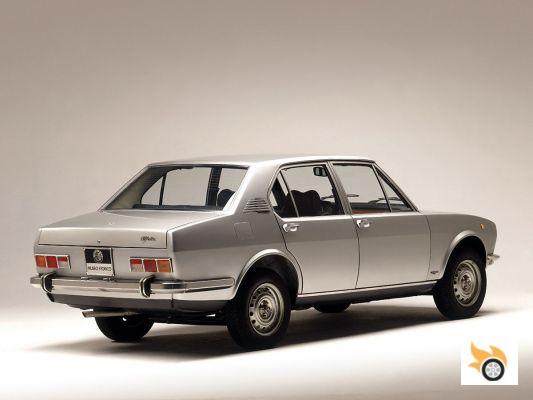
By the time it was left alone, after the demise of its two direct rivals and the launch of the Alfa 6 as a top-of-the-line complement, the Alfetta no longer had the novelty factor in its favour.
The range gradually evolved, including models with lower power and fuel consumption to adapt to the European reality of the oil crisis, with a 1.6-litre 109 hp engine as the entry level, and also with other versions, including some for export to the United States with Spica injection, a diesel variant with VM engine with only 82 hp, but really low consumption, and a 2.0 130 hp 2.0 marketed as Quadrifoglio Oro.
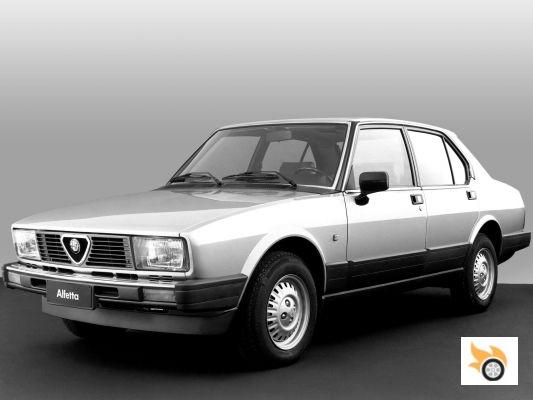
In total, until the model was discontinued in 1984, a total of 475,719 Alfettas would leave Arese for the entire planet. From its technical legacy would also derive the Giulietta as a D-segment sedan (the Alfetta was 4.28 metres long, while the Giulietta was almost as long, at 4.21), from which in turn would derive the 75. It is precisely the Giulietta the next model we will discuss in this special.
It would be the platform of this Alfetta, with its particular mechanical layout, the last great successful platform developed entirely by Alfa Romeo "at the technical forefront", until the appearance this year of the new Giulia.
The return of Alfa Romeo: from the 1900 to the Giulia